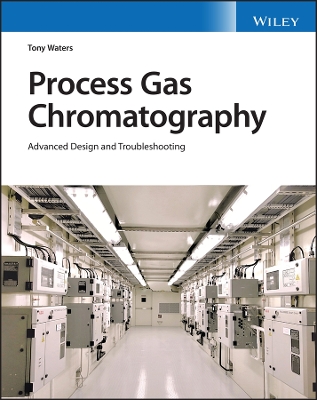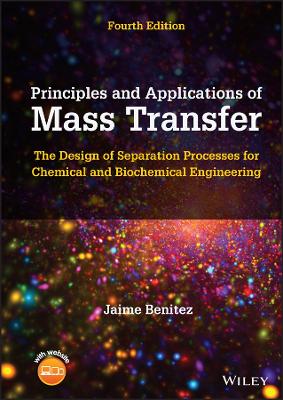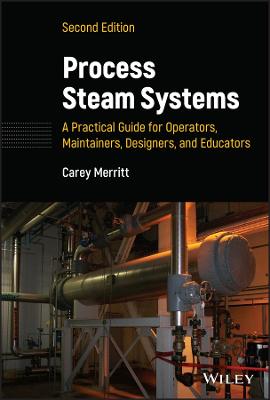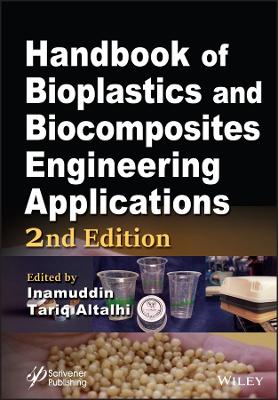Plant Optimization in the Process Industries
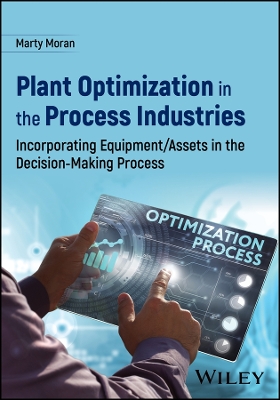 -10%
portes grátis
-10%
portes grátis
Plant Optimization in the Process Industries
Incorporating Equipment/Assets in the Decision-Making Process
Moran, Marty
John Wiley & Sons Inc
10/2024
352
Dura
9781119707738
15 a 20 dias
Descrição não disponível.
Foreword by Ron Lambert xxi
About the Author xxiii
Acknowledgments xxviii
Disclaimer xxx
1 Optimizing a Process Plant 1
1.1 High-Level Business Goals 1
1.2 Profit 1
1.3 Each Plant Is Unique 3
1.4 Plant Optimization Nirvana 3
1.5 Process/Asset Views of the Business Need Alignment 5
1.6 Optimization Technologies on the Process Side of the Business 6
1.7 Optimization Technologies on the Asset Side of the Business 7
1.8 Conclusion 10
1.9 Future Chapters 11
2 Gen 1 - Transitioning from Reliability to Asset Management 14
2.1 Reliability's Early Days 14
2.2 Rebranding Reliability to be Asset Management 15
2.3 Changing the Reliability Management Structure 16
2.4 Where Did Gen 1 Fall Short? 16
2.5 Adoption of Monte Carlo Simulation Technology Has Struggled 16
2.6 Asset Optimization Nirvana - The Future 17
2.7 Conclusion 19
3 Gen 2 - Plant Optimization Using Asset Modeling Methodologies 20
3.1 Gen 2 Philosophy 20
3.2 Gen 2 Asset Optimization Applications 23
3.3 Conclusion 31
4 Selecting the Best Improvement Projects - Optimal Process Unit Availability 32
4.1 Industry Challenge 34
4.2 Improvement Projects 35
4.3 Asset Optimization Technologies 38
4.4 Optimizer Definition 42
4.5 Optimization Example 45
4.6 More General Optimization 58
4.7 Does Reducing Availability Make Sense for Any of Our Process Units? 58
4.8 Conclusion 59
5 Monte Carlo Simulation Overview 61
5.1 Reliability Block Diagram (RBD) 62
5.2 Rolling the Dice 63
5.3 Histories within a Model Run 64
5.4 Results 65
5.4.1 Probability Distributions 65
5.5 Submodel - Detailed Process Unit Model 67
5.6 What Level of Detail Is Required? 68
5.7 Definitions 68
5.8 RAM Software Tools 69
5.9 Challenge to Monte Carlo Simulation Vendors 69
5.10 Conclusions 70
6 Optimizer Overview 71
6.1 Independent Variables 71
6.2 Dependent Variables 72
6.3 Constraints 72
6.4 Objective Function 72
6.5 Optimizer Problem Definitions 73
6.6 Conclusions 82
7 The Consultation Process - The Main Work Process 83
7.1 Nobody Has Excellent Data in the Process Industries 83
7.2 Why Operating Conditions Are so Important in the Process Industries 84
7.3 Tapping into Your Company's Innate Knowledge 84
7.4 Golden Opportunity To Test the Approach 85
7.5 Consulting Meeting Details 87
7.6 Monte Carlo Modeler Software Inputs 91
7.7 Data from Asset Management Systems 92
7.8 Data Storage/Structure 93
7.9 Conclusion 94
8 Turnaround Considerations 95
8.1 Example Problem Overview 97
8.2 Results Expectations 102
8.3 Solution Approach 106
8.4 First Problem - Fixed Start Date and Duration 108
8.5 Second Problem - Fixed Start Date, but Flexible Duration 113
8.6 Last Problem - Flexible Start Date 116
8.7 Conclusion 118
9 What About Process Conditions? 119
9.1 Examples Where Feed Quality and Process Conditions Play a Major Role 119
9.2 Operating Condition Effect on Failure Data 120
9.3 Example Incorporating Process Conditions into Our Problem Definition 121
9.4 Conclusion 125
10 Opportunistic Maintenance Optimization 126
10.1 Modeling Maintenance Plan Options 127
10.2 Example Problem Data 128
10.3 Single Equipment Opportunistic Maintenance Optimization 130
10.4 Intra Unit Opportunistic Maintenance Optimization 132
10.5 Inter Unit Opportunistic Maintenance Optimization 135
10.6 Conclusion 138
11 Spare Parts Optimization 139
11.1 Spares Parts Dependence Often Masks Other Equipment Issues 139
11.2 Typical Methods for Estimating Spare Parts 140
11.3 Logistical Challenges 140
11.4 Lead Times/Price/Vendor Issues 141
11.5 Prioritization 142
11.6 Example Problem Data 144
11.7 Effect of Failure Standard Deviation 148
11.8 Optimization Problems Overview 149
11.9 Single Equipment Spares Optimization 151
11.10 Intra-Unit Spares Optimization 152
11.11 Inter-Unit Spares Optimization 154
11.12 Common Spare Across Multiple Units 157
11.13 Full-time Spare Parts Engineer Position 161
11.14 Conclusion 161
12 Task/Resource Optimization 162
12.1 Example Problem Data 163
12.2 General Approach 164
12.3 Single Equipment Task Optimization 166
12.4 Intra-Unit Equipment Task Optimization 169
12.5 Inter-Unit Equipment Task Optimization 172
12.6 Conclusion 178
13 Tankage Determination/Optimization 179
13.1 Why Tankage Size Matters 179
13.2 Example Problem Overview 180
13.3 Same Availability for both Upstream and Downstream Process Units 181
13.4 Downstream Availability Variable with Constant Upstream Availability 182
13.5 Conclusion 184
14 Improving Availability 185
14.1 Options to Improve Availability 186
14.2 How Reliability and Process Configuration Effects Availability Results 189
14.3 Which Option Is the Best? 190
14.4 Conclusion 191
15 Equipment Reliability Optimization 192
15.1 General Approach 193
15.2 Example Problem Data 195
15.3 First Impressions of Example Data - Impact on Problem Solution 196
15.4 Effect of Failure Standard Deviation 197
15.5 Single Equipment Design Optimization 198
15.6 Intra-Unit Design Optimization 201
15.7 Inter-Unit Design Optimization 210
15.8 Scenario Final Thoughts 212
15.9 Conclusion 212
16 Plant Optimization Within the Design Process 214
16.1 Combining Process Simulation with Monte Carlo Simulation 214
16.2 Balancing the Short/Long Term within the Design Process 215
16.3 Improvement Project 215
16.4 Debottlenecking Project 218
16.5 Changes to Plant-Level Model for Grassroots Process Design 221
16.6 Grassroots Process Unit Design 221
16.7 Design Considerations 223
16.8 Conclusion 225
17 Combined Optimization 228
17.1 Combination of Improvement Projects and Crude Feed Mix Optimization 229
17.2 Combining Turnaround and Future Feed Composition 237
17.3 Conclusion 250
18 Mapping Models to Optimization Problems 251
18.1 Mapping Between Optimization Problem and Model(s) Required 251
18.2 Selection of Optimal Improvement Projects 252
18.3 Storage Optimization 253
18.4 Turnaround Timing/Duration and Equipment Restoration Selection 253
18.5 Maintenance Plan Options Optimization 253
18.6 Spares Optimization 253
18.7 Task Optimization 254
18.8 Asset Design Optimization 254
18.9 How to Kickstart Your Program 254
18.10 Standard Models or Not? 255
18.11 Process Unit Models 255
18.12 Site or Plant Models 257
18.13 Equipment Models 257
18.14 Responsibility for Equipment Models 258
18.15 Conclusion 258
19 Creating a Program Master Plan 259
19.1 Opportunity Assessment 260
19.2 Project Selection 262
19.3 Project Phases 264
19.4 Resources 266
19.5 Consultation Process 269
19.6 Data - and Its Implications 269
19.7 Technologies 270
19.8 Work Processes 272
19.9 Training 273
19.10 Conclusion 273
20 Conclusion 274
20.1 The Need for a Complex Asset Base 274
20.2 High-Level Business Goals 275
20.3 Asset Decisions that Can Drive Optimal Profit 275
20.4 A Side Benefit ? Combining the Process and Equipment Views of the Business 278
20.5 How to Move Forward with Your Program 280
20.6 Limitations of Asset Modeling 281
20.7 Comparing Process and Asset Optimization 281
20.8 The Future of Optimization 282
Appendix A Nuts and Bolts of Monte Carlo Simulation 283
Appendix B Refinery Example Process Description 294
Notes 308
Index 311
About the Author xxiii
Acknowledgments xxviii
Disclaimer xxx
1 Optimizing a Process Plant 1
1.1 High-Level Business Goals 1
1.2 Profit 1
1.3 Each Plant Is Unique 3
1.4 Plant Optimization Nirvana 3
1.5 Process/Asset Views of the Business Need Alignment 5
1.6 Optimization Technologies on the Process Side of the Business 6
1.7 Optimization Technologies on the Asset Side of the Business 7
1.8 Conclusion 10
1.9 Future Chapters 11
2 Gen 1 - Transitioning from Reliability to Asset Management 14
2.1 Reliability's Early Days 14
2.2 Rebranding Reliability to be Asset Management 15
2.3 Changing the Reliability Management Structure 16
2.4 Where Did Gen 1 Fall Short? 16
2.5 Adoption of Monte Carlo Simulation Technology Has Struggled 16
2.6 Asset Optimization Nirvana - The Future 17
2.7 Conclusion 19
3 Gen 2 - Plant Optimization Using Asset Modeling Methodologies 20
3.1 Gen 2 Philosophy 20
3.2 Gen 2 Asset Optimization Applications 23
3.3 Conclusion 31
4 Selecting the Best Improvement Projects - Optimal Process Unit Availability 32
4.1 Industry Challenge 34
4.2 Improvement Projects 35
4.3 Asset Optimization Technologies 38
4.4 Optimizer Definition 42
4.5 Optimization Example 45
4.6 More General Optimization 58
4.7 Does Reducing Availability Make Sense for Any of Our Process Units? 58
4.8 Conclusion 59
5 Monte Carlo Simulation Overview 61
5.1 Reliability Block Diagram (RBD) 62
5.2 Rolling the Dice 63
5.3 Histories within a Model Run 64
5.4 Results 65
5.4.1 Probability Distributions 65
5.5 Submodel - Detailed Process Unit Model 67
5.6 What Level of Detail Is Required? 68
5.7 Definitions 68
5.8 RAM Software Tools 69
5.9 Challenge to Monte Carlo Simulation Vendors 69
5.10 Conclusions 70
6 Optimizer Overview 71
6.1 Independent Variables 71
6.2 Dependent Variables 72
6.3 Constraints 72
6.4 Objective Function 72
6.5 Optimizer Problem Definitions 73
6.6 Conclusions 82
7 The Consultation Process - The Main Work Process 83
7.1 Nobody Has Excellent Data in the Process Industries 83
7.2 Why Operating Conditions Are so Important in the Process Industries 84
7.3 Tapping into Your Company's Innate Knowledge 84
7.4 Golden Opportunity To Test the Approach 85
7.5 Consulting Meeting Details 87
7.6 Monte Carlo Modeler Software Inputs 91
7.7 Data from Asset Management Systems 92
7.8 Data Storage/Structure 93
7.9 Conclusion 94
8 Turnaround Considerations 95
8.1 Example Problem Overview 97
8.2 Results Expectations 102
8.3 Solution Approach 106
8.4 First Problem - Fixed Start Date and Duration 108
8.5 Second Problem - Fixed Start Date, but Flexible Duration 113
8.6 Last Problem - Flexible Start Date 116
8.7 Conclusion 118
9 What About Process Conditions? 119
9.1 Examples Where Feed Quality and Process Conditions Play a Major Role 119
9.2 Operating Condition Effect on Failure Data 120
9.3 Example Incorporating Process Conditions into Our Problem Definition 121
9.4 Conclusion 125
10 Opportunistic Maintenance Optimization 126
10.1 Modeling Maintenance Plan Options 127
10.2 Example Problem Data 128
10.3 Single Equipment Opportunistic Maintenance Optimization 130
10.4 Intra Unit Opportunistic Maintenance Optimization 132
10.5 Inter Unit Opportunistic Maintenance Optimization 135
10.6 Conclusion 138
11 Spare Parts Optimization 139
11.1 Spares Parts Dependence Often Masks Other Equipment Issues 139
11.2 Typical Methods for Estimating Spare Parts 140
11.3 Logistical Challenges 140
11.4 Lead Times/Price/Vendor Issues 141
11.5 Prioritization 142
11.6 Example Problem Data 144
11.7 Effect of Failure Standard Deviation 148
11.8 Optimization Problems Overview 149
11.9 Single Equipment Spares Optimization 151
11.10 Intra-Unit Spares Optimization 152
11.11 Inter-Unit Spares Optimization 154
11.12 Common Spare Across Multiple Units 157
11.13 Full-time Spare Parts Engineer Position 161
11.14 Conclusion 161
12 Task/Resource Optimization 162
12.1 Example Problem Data 163
12.2 General Approach 164
12.3 Single Equipment Task Optimization 166
12.4 Intra-Unit Equipment Task Optimization 169
12.5 Inter-Unit Equipment Task Optimization 172
12.6 Conclusion 178
13 Tankage Determination/Optimization 179
13.1 Why Tankage Size Matters 179
13.2 Example Problem Overview 180
13.3 Same Availability for both Upstream and Downstream Process Units 181
13.4 Downstream Availability Variable with Constant Upstream Availability 182
13.5 Conclusion 184
14 Improving Availability 185
14.1 Options to Improve Availability 186
14.2 How Reliability and Process Configuration Effects Availability Results 189
14.3 Which Option Is the Best? 190
14.4 Conclusion 191
15 Equipment Reliability Optimization 192
15.1 General Approach 193
15.2 Example Problem Data 195
15.3 First Impressions of Example Data - Impact on Problem Solution 196
15.4 Effect of Failure Standard Deviation 197
15.5 Single Equipment Design Optimization 198
15.6 Intra-Unit Design Optimization 201
15.7 Inter-Unit Design Optimization 210
15.8 Scenario Final Thoughts 212
15.9 Conclusion 212
16 Plant Optimization Within the Design Process 214
16.1 Combining Process Simulation with Monte Carlo Simulation 214
16.2 Balancing the Short/Long Term within the Design Process 215
16.3 Improvement Project 215
16.4 Debottlenecking Project 218
16.5 Changes to Plant-Level Model for Grassroots Process Design 221
16.6 Grassroots Process Unit Design 221
16.7 Design Considerations 223
16.8 Conclusion 225
17 Combined Optimization 228
17.1 Combination of Improvement Projects and Crude Feed Mix Optimization 229
17.2 Combining Turnaround and Future Feed Composition 237
17.3 Conclusion 250
18 Mapping Models to Optimization Problems 251
18.1 Mapping Between Optimization Problem and Model(s) Required 251
18.2 Selection of Optimal Improvement Projects 252
18.3 Storage Optimization 253
18.4 Turnaround Timing/Duration and Equipment Restoration Selection 253
18.5 Maintenance Plan Options Optimization 253
18.6 Spares Optimization 253
18.7 Task Optimization 254
18.8 Asset Design Optimization 254
18.9 How to Kickstart Your Program 254
18.10 Standard Models or Not? 255
18.11 Process Unit Models 255
18.12 Site or Plant Models 257
18.13 Equipment Models 257
18.14 Responsibility for Equipment Models 258
18.15 Conclusion 258
19 Creating a Program Master Plan 259
19.1 Opportunity Assessment 260
19.2 Project Selection 262
19.3 Project Phases 264
19.4 Resources 266
19.5 Consultation Process 269
19.6 Data - and Its Implications 269
19.7 Technologies 270
19.8 Work Processes 272
19.9 Training 273
19.10 Conclusion 273
20 Conclusion 274
20.1 The Need for a Complex Asset Base 274
20.2 High-Level Business Goals 275
20.3 Asset Decisions that Can Drive Optimal Profit 275
20.4 A Side Benefit ? Combining the Process and Equipment Views of the Business 278
20.5 How to Move Forward with Your Program 280
20.6 Limitations of Asset Modeling 281
20.7 Comparing Process and Asset Optimization 281
20.8 The Future of Optimization 282
Appendix A Nuts and Bolts of Monte Carlo Simulation 283
Appendix B Refinery Example Process Description 294
Notes 308
Index 311
Este título pertence ao(s) assunto(s) indicados(s). Para ver outros títulos clique no assunto desejado.
Constrained Optimization; advanced process control; advanced process optimization; Asset Management; Asset Optimization; GRG2; Monte-Carlo; non-linear optimization; Plant optimization; RAM ; modelling; Refinery; Reliability; statistical asset model
Foreword by Ron Lambert xxi
About the Author xxiii
Acknowledgments xxviii
Disclaimer xxx
1 Optimizing a Process Plant 1
1.1 High-Level Business Goals 1
1.2 Profit 1
1.3 Each Plant Is Unique 3
1.4 Plant Optimization Nirvana 3
1.5 Process/Asset Views of the Business Need Alignment 5
1.6 Optimization Technologies on the Process Side of the Business 6
1.7 Optimization Technologies on the Asset Side of the Business 7
1.8 Conclusion 10
1.9 Future Chapters 11
2 Gen 1 - Transitioning from Reliability to Asset Management 14
2.1 Reliability's Early Days 14
2.2 Rebranding Reliability to be Asset Management 15
2.3 Changing the Reliability Management Structure 16
2.4 Where Did Gen 1 Fall Short? 16
2.5 Adoption of Monte Carlo Simulation Technology Has Struggled 16
2.6 Asset Optimization Nirvana - The Future 17
2.7 Conclusion 19
3 Gen 2 - Plant Optimization Using Asset Modeling Methodologies 20
3.1 Gen 2 Philosophy 20
3.2 Gen 2 Asset Optimization Applications 23
3.3 Conclusion 31
4 Selecting the Best Improvement Projects - Optimal Process Unit Availability 32
4.1 Industry Challenge 34
4.2 Improvement Projects 35
4.3 Asset Optimization Technologies 38
4.4 Optimizer Definition 42
4.5 Optimization Example 45
4.6 More General Optimization 58
4.7 Does Reducing Availability Make Sense for Any of Our Process Units? 58
4.8 Conclusion 59
5 Monte Carlo Simulation Overview 61
5.1 Reliability Block Diagram (RBD) 62
5.2 Rolling the Dice 63
5.3 Histories within a Model Run 64
5.4 Results 65
5.4.1 Probability Distributions 65
5.5 Submodel - Detailed Process Unit Model 67
5.6 What Level of Detail Is Required? 68
5.7 Definitions 68
5.8 RAM Software Tools 69
5.9 Challenge to Monte Carlo Simulation Vendors 69
5.10 Conclusions 70
6 Optimizer Overview 71
6.1 Independent Variables 71
6.2 Dependent Variables 72
6.3 Constraints 72
6.4 Objective Function 72
6.5 Optimizer Problem Definitions 73
6.6 Conclusions 82
7 The Consultation Process - The Main Work Process 83
7.1 Nobody Has Excellent Data in the Process Industries 83
7.2 Why Operating Conditions Are so Important in the Process Industries 84
7.3 Tapping into Your Company's Innate Knowledge 84
7.4 Golden Opportunity To Test the Approach 85
7.5 Consulting Meeting Details 87
7.6 Monte Carlo Modeler Software Inputs 91
7.7 Data from Asset Management Systems 92
7.8 Data Storage/Structure 93
7.9 Conclusion 94
8 Turnaround Considerations 95
8.1 Example Problem Overview 97
8.2 Results Expectations 102
8.3 Solution Approach 106
8.4 First Problem - Fixed Start Date and Duration 108
8.5 Second Problem - Fixed Start Date, but Flexible Duration 113
8.6 Last Problem - Flexible Start Date 116
8.7 Conclusion 118
9 What About Process Conditions? 119
9.1 Examples Where Feed Quality and Process Conditions Play a Major Role 119
9.2 Operating Condition Effect on Failure Data 120
9.3 Example Incorporating Process Conditions into Our Problem Definition 121
9.4 Conclusion 125
10 Opportunistic Maintenance Optimization 126
10.1 Modeling Maintenance Plan Options 127
10.2 Example Problem Data 128
10.3 Single Equipment Opportunistic Maintenance Optimization 130
10.4 Intra Unit Opportunistic Maintenance Optimization 132
10.5 Inter Unit Opportunistic Maintenance Optimization 135
10.6 Conclusion 138
11 Spare Parts Optimization 139
11.1 Spares Parts Dependence Often Masks Other Equipment Issues 139
11.2 Typical Methods for Estimating Spare Parts 140
11.3 Logistical Challenges 140
11.4 Lead Times/Price/Vendor Issues 141
11.5 Prioritization 142
11.6 Example Problem Data 144
11.7 Effect of Failure Standard Deviation 148
11.8 Optimization Problems Overview 149
11.9 Single Equipment Spares Optimization 151
11.10 Intra-Unit Spares Optimization 152
11.11 Inter-Unit Spares Optimization 154
11.12 Common Spare Across Multiple Units 157
11.13 Full-time Spare Parts Engineer Position 161
11.14 Conclusion 161
12 Task/Resource Optimization 162
12.1 Example Problem Data 163
12.2 General Approach 164
12.3 Single Equipment Task Optimization 166
12.4 Intra-Unit Equipment Task Optimization 169
12.5 Inter-Unit Equipment Task Optimization 172
12.6 Conclusion 178
13 Tankage Determination/Optimization 179
13.1 Why Tankage Size Matters 179
13.2 Example Problem Overview 180
13.3 Same Availability for both Upstream and Downstream Process Units 181
13.4 Downstream Availability Variable with Constant Upstream Availability 182
13.5 Conclusion 184
14 Improving Availability 185
14.1 Options to Improve Availability 186
14.2 How Reliability and Process Configuration Effects Availability Results 189
14.3 Which Option Is the Best? 190
14.4 Conclusion 191
15 Equipment Reliability Optimization 192
15.1 General Approach 193
15.2 Example Problem Data 195
15.3 First Impressions of Example Data - Impact on Problem Solution 196
15.4 Effect of Failure Standard Deviation 197
15.5 Single Equipment Design Optimization 198
15.6 Intra-Unit Design Optimization 201
15.7 Inter-Unit Design Optimization 210
15.8 Scenario Final Thoughts 212
15.9 Conclusion 212
16 Plant Optimization Within the Design Process 214
16.1 Combining Process Simulation with Monte Carlo Simulation 214
16.2 Balancing the Short/Long Term within the Design Process 215
16.3 Improvement Project 215
16.4 Debottlenecking Project 218
16.5 Changes to Plant-Level Model for Grassroots Process Design 221
16.6 Grassroots Process Unit Design 221
16.7 Design Considerations 223
16.8 Conclusion 225
17 Combined Optimization 228
17.1 Combination of Improvement Projects and Crude Feed Mix Optimization 229
17.2 Combining Turnaround and Future Feed Composition 237
17.3 Conclusion 250
18 Mapping Models to Optimization Problems 251
18.1 Mapping Between Optimization Problem and Model(s) Required 251
18.2 Selection of Optimal Improvement Projects 252
18.3 Storage Optimization 253
18.4 Turnaround Timing/Duration and Equipment Restoration Selection 253
18.5 Maintenance Plan Options Optimization 253
18.6 Spares Optimization 253
18.7 Task Optimization 254
18.8 Asset Design Optimization 254
18.9 How to Kickstart Your Program 254
18.10 Standard Models or Not? 255
18.11 Process Unit Models 255
18.12 Site or Plant Models 257
18.13 Equipment Models 257
18.14 Responsibility for Equipment Models 258
18.15 Conclusion 258
19 Creating a Program Master Plan 259
19.1 Opportunity Assessment 260
19.2 Project Selection 262
19.3 Project Phases 264
19.4 Resources 266
19.5 Consultation Process 269
19.6 Data - and Its Implications 269
19.7 Technologies 270
19.8 Work Processes 272
19.9 Training 273
19.10 Conclusion 273
20 Conclusion 274
20.1 The Need for a Complex Asset Base 274
20.2 High-Level Business Goals 275
20.3 Asset Decisions that Can Drive Optimal Profit 275
20.4 A Side Benefit ? Combining the Process and Equipment Views of the Business 278
20.5 How to Move Forward with Your Program 280
20.6 Limitations of Asset Modeling 281
20.7 Comparing Process and Asset Optimization 281
20.8 The Future of Optimization 282
Appendix A Nuts and Bolts of Monte Carlo Simulation 283
Appendix B Refinery Example Process Description 294
Notes 308
Index 311
About the Author xxiii
Acknowledgments xxviii
Disclaimer xxx
1 Optimizing a Process Plant 1
1.1 High-Level Business Goals 1
1.2 Profit 1
1.3 Each Plant Is Unique 3
1.4 Plant Optimization Nirvana 3
1.5 Process/Asset Views of the Business Need Alignment 5
1.6 Optimization Technologies on the Process Side of the Business 6
1.7 Optimization Technologies on the Asset Side of the Business 7
1.8 Conclusion 10
1.9 Future Chapters 11
2 Gen 1 - Transitioning from Reliability to Asset Management 14
2.1 Reliability's Early Days 14
2.2 Rebranding Reliability to be Asset Management 15
2.3 Changing the Reliability Management Structure 16
2.4 Where Did Gen 1 Fall Short? 16
2.5 Adoption of Monte Carlo Simulation Technology Has Struggled 16
2.6 Asset Optimization Nirvana - The Future 17
2.7 Conclusion 19
3 Gen 2 - Plant Optimization Using Asset Modeling Methodologies 20
3.1 Gen 2 Philosophy 20
3.2 Gen 2 Asset Optimization Applications 23
3.3 Conclusion 31
4 Selecting the Best Improvement Projects - Optimal Process Unit Availability 32
4.1 Industry Challenge 34
4.2 Improvement Projects 35
4.3 Asset Optimization Technologies 38
4.4 Optimizer Definition 42
4.5 Optimization Example 45
4.6 More General Optimization 58
4.7 Does Reducing Availability Make Sense for Any of Our Process Units? 58
4.8 Conclusion 59
5 Monte Carlo Simulation Overview 61
5.1 Reliability Block Diagram (RBD) 62
5.2 Rolling the Dice 63
5.3 Histories within a Model Run 64
5.4 Results 65
5.4.1 Probability Distributions 65
5.5 Submodel - Detailed Process Unit Model 67
5.6 What Level of Detail Is Required? 68
5.7 Definitions 68
5.8 RAM Software Tools 69
5.9 Challenge to Monte Carlo Simulation Vendors 69
5.10 Conclusions 70
6 Optimizer Overview 71
6.1 Independent Variables 71
6.2 Dependent Variables 72
6.3 Constraints 72
6.4 Objective Function 72
6.5 Optimizer Problem Definitions 73
6.6 Conclusions 82
7 The Consultation Process - The Main Work Process 83
7.1 Nobody Has Excellent Data in the Process Industries 83
7.2 Why Operating Conditions Are so Important in the Process Industries 84
7.3 Tapping into Your Company's Innate Knowledge 84
7.4 Golden Opportunity To Test the Approach 85
7.5 Consulting Meeting Details 87
7.6 Monte Carlo Modeler Software Inputs 91
7.7 Data from Asset Management Systems 92
7.8 Data Storage/Structure 93
7.9 Conclusion 94
8 Turnaround Considerations 95
8.1 Example Problem Overview 97
8.2 Results Expectations 102
8.3 Solution Approach 106
8.4 First Problem - Fixed Start Date and Duration 108
8.5 Second Problem - Fixed Start Date, but Flexible Duration 113
8.6 Last Problem - Flexible Start Date 116
8.7 Conclusion 118
9 What About Process Conditions? 119
9.1 Examples Where Feed Quality and Process Conditions Play a Major Role 119
9.2 Operating Condition Effect on Failure Data 120
9.3 Example Incorporating Process Conditions into Our Problem Definition 121
9.4 Conclusion 125
10 Opportunistic Maintenance Optimization 126
10.1 Modeling Maintenance Plan Options 127
10.2 Example Problem Data 128
10.3 Single Equipment Opportunistic Maintenance Optimization 130
10.4 Intra Unit Opportunistic Maintenance Optimization 132
10.5 Inter Unit Opportunistic Maintenance Optimization 135
10.6 Conclusion 138
11 Spare Parts Optimization 139
11.1 Spares Parts Dependence Often Masks Other Equipment Issues 139
11.2 Typical Methods for Estimating Spare Parts 140
11.3 Logistical Challenges 140
11.4 Lead Times/Price/Vendor Issues 141
11.5 Prioritization 142
11.6 Example Problem Data 144
11.7 Effect of Failure Standard Deviation 148
11.8 Optimization Problems Overview 149
11.9 Single Equipment Spares Optimization 151
11.10 Intra-Unit Spares Optimization 152
11.11 Inter-Unit Spares Optimization 154
11.12 Common Spare Across Multiple Units 157
11.13 Full-time Spare Parts Engineer Position 161
11.14 Conclusion 161
12 Task/Resource Optimization 162
12.1 Example Problem Data 163
12.2 General Approach 164
12.3 Single Equipment Task Optimization 166
12.4 Intra-Unit Equipment Task Optimization 169
12.5 Inter-Unit Equipment Task Optimization 172
12.6 Conclusion 178
13 Tankage Determination/Optimization 179
13.1 Why Tankage Size Matters 179
13.2 Example Problem Overview 180
13.3 Same Availability for both Upstream and Downstream Process Units 181
13.4 Downstream Availability Variable with Constant Upstream Availability 182
13.5 Conclusion 184
14 Improving Availability 185
14.1 Options to Improve Availability 186
14.2 How Reliability and Process Configuration Effects Availability Results 189
14.3 Which Option Is the Best? 190
14.4 Conclusion 191
15 Equipment Reliability Optimization 192
15.1 General Approach 193
15.2 Example Problem Data 195
15.3 First Impressions of Example Data - Impact on Problem Solution 196
15.4 Effect of Failure Standard Deviation 197
15.5 Single Equipment Design Optimization 198
15.6 Intra-Unit Design Optimization 201
15.7 Inter-Unit Design Optimization 210
15.8 Scenario Final Thoughts 212
15.9 Conclusion 212
16 Plant Optimization Within the Design Process 214
16.1 Combining Process Simulation with Monte Carlo Simulation 214
16.2 Balancing the Short/Long Term within the Design Process 215
16.3 Improvement Project 215
16.4 Debottlenecking Project 218
16.5 Changes to Plant-Level Model for Grassroots Process Design 221
16.6 Grassroots Process Unit Design 221
16.7 Design Considerations 223
16.8 Conclusion 225
17 Combined Optimization 228
17.1 Combination of Improvement Projects and Crude Feed Mix Optimization 229
17.2 Combining Turnaround and Future Feed Composition 237
17.3 Conclusion 250
18 Mapping Models to Optimization Problems 251
18.1 Mapping Between Optimization Problem and Model(s) Required 251
18.2 Selection of Optimal Improvement Projects 252
18.3 Storage Optimization 253
18.4 Turnaround Timing/Duration and Equipment Restoration Selection 253
18.5 Maintenance Plan Options Optimization 253
18.6 Spares Optimization 253
18.7 Task Optimization 254
18.8 Asset Design Optimization 254
18.9 How to Kickstart Your Program 254
18.10 Standard Models or Not? 255
18.11 Process Unit Models 255
18.12 Site or Plant Models 257
18.13 Equipment Models 257
18.14 Responsibility for Equipment Models 258
18.15 Conclusion 258
19 Creating a Program Master Plan 259
19.1 Opportunity Assessment 260
19.2 Project Selection 262
19.3 Project Phases 264
19.4 Resources 266
19.5 Consultation Process 269
19.6 Data - and Its Implications 269
19.7 Technologies 270
19.8 Work Processes 272
19.9 Training 273
19.10 Conclusion 273
20 Conclusion 274
20.1 The Need for a Complex Asset Base 274
20.2 High-Level Business Goals 275
20.3 Asset Decisions that Can Drive Optimal Profit 275
20.4 A Side Benefit ? Combining the Process and Equipment Views of the Business 278
20.5 How to Move Forward with Your Program 280
20.6 Limitations of Asset Modeling 281
20.7 Comparing Process and Asset Optimization 281
20.8 The Future of Optimization 282
Appendix A Nuts and Bolts of Monte Carlo Simulation 283
Appendix B Refinery Example Process Description 294
Notes 308
Index 311
Este título pertence ao(s) assunto(s) indicados(s). Para ver outros títulos clique no assunto desejado.

